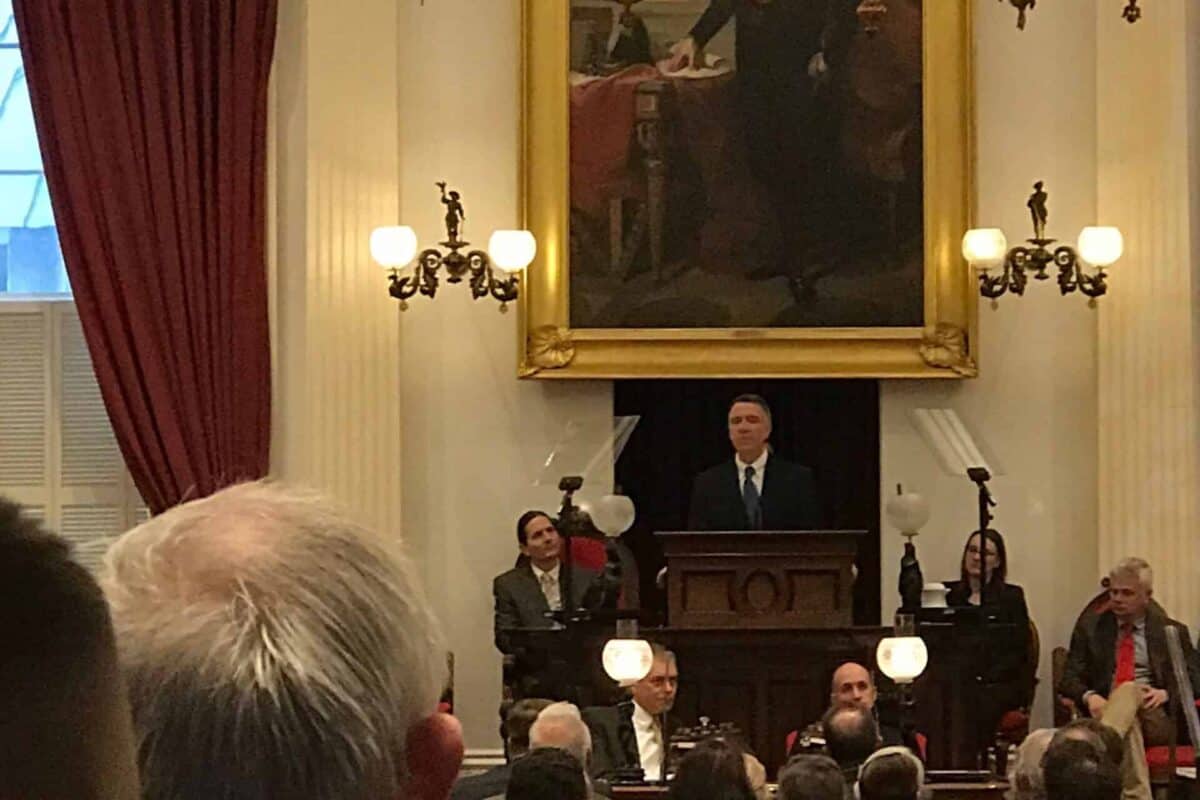Governor Phil Scott delivered his much-anticipated Budget Address on Tuesday, presenting his vision for the FY2018 budget. As promised during the campaign, the Scott budget does not raise new taxes or fees and level funds state spending. It does however propose substantial changes to Vermont’s education system.
For years, funding for K-12 education has been a challenging subject for legislators. School enrollment has declined, while per-pupil spending has risen along with the property tax rate. At the same time, the cost of higher education has risen along with calls for increased funding for Vermont’s institutions of higher learning. Finally, there has been a push to invest in childcare.
The Governor’s budget attempts to address all three of these concerns. Two crucial elements of Governor Scott’s budget are a cap on school budgets for the 2018 fiscal year and a mandate that all school districts vote on budgets on the same day – Tuesday, May 23rd. The proposed budget also raises the percentage of health insurance teachers would pay from 15 percent up to the 20 percent that is required of state employees.
The Governor’s proposal has received a chilly reception from Democrats and Progressives in the Legislature, the Vermont NEA and the Vermont School Boards Association. If the Democratically controlled legislature does not support his proposal, they will need to identify an alternative solution – one that will face tough scrutiny from the Administration, especially if it includes new revenue. If the legislature rejects the Governor’s proposal – which appears likely – politically popular investments in childcare and higher education initiatives would need to be funded with cuts in other programs.
From a purely logistical standpoint, this proposal faces its fair share of challenges. Many school boards across the state are currently in negotiation with teachers, and some have already completed their proposed budgets. Requiring the increase from 15 to 20 percent for healthcare contributions could change the course of those negotiations and appears to be a non-starter for groups like the NEA and Vermont School Boards.
When the 2018 legislative session began just three weeks ago, it was assumed by many that the substantive conversation the Legislature would have over the course of the session would be focused on health care reform. Tuesday’s address signals that much of the oxygen over the next several months will be taken up by education.
What is clear is that the budget, along with Governor Scott’s executive order combining the Labor Department with the Agency of Commerce and Community Development, provide ample opportunities for the branches of government to butt heads and debate their visions for the future of Vermont.


